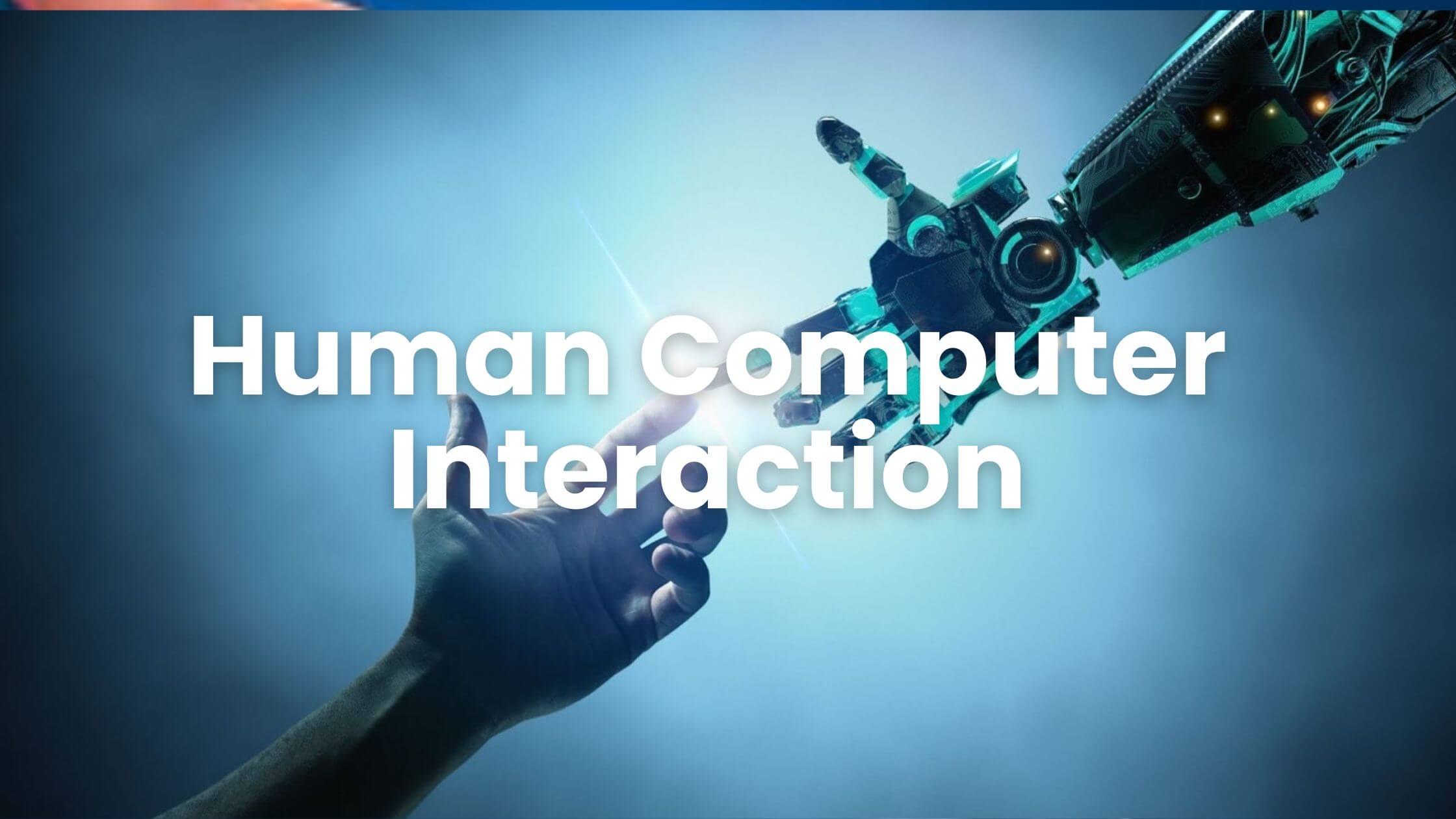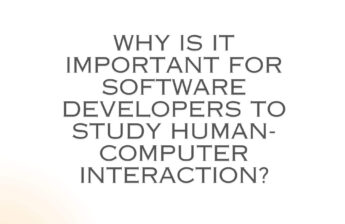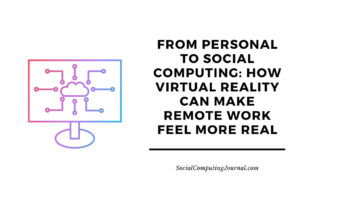Human-computer interactions (HCI) is an area of study that spans multiple disciplines that focuses specifically on design and development for computer technology, and particularly interactions between humans (the people who use the computers) as well as computers. While it was initially focused on computer systems, HCI has since expanded to cover all types of design and technology for information.
Explanation by SCJ:
Human-Computer Interaction, a multidisciplinary area which focuses on the design as well as evaluating the performance of computer systems as well as technology that people interact with. It’s about understanding and enhancing the interactions between computers and humans to enhance the usability of technology, make it more efficient and enjoyable.
HCI experts think about how to create and build systems that are able to satisfy humans. The majority of the research focuses on improving the human-computer interaction through improving the way users use and understand the interface.
The Rise of Human Computer Interaction
- HCI (Human-Computer Interaction) emerged in the early 1980s as a means to enhance computer user-friendliness.
- Over time, HCI expanded to encompass all IT research areas.
- Apple’s introduction of the Macintosh in 1984 revolutionized computer accessibility and communication ease.

- This era saw the popularity of keyboard, mouse, and icon-based user interfaces.
- Despite significant growth, the field of HCI continues to expand as more insights about users and computers are gained.
- New HCI methodologies aim to provide users with more options and a humane approach to cater to diverse preferences, disabilities, and fears.
- HCI possibilities are growing exponentially, with sign systems swiftly adopting technologies for phones, homes, and personal devices.
Fields that include Human-Computer Interaction:
Do you know many fields in are included in human computer interaction? Here are some disciplines which are included:
- Computer science
- Philosophy
- Social psychology
- Linguistics
- Engineering
- Artificial intelligence
- Sociology
- Cognitive science
- Ergonomics
- Anthropology
- Design
What Topics Does Human-Computer Interaction Encompass?
What topics does human computer interaction covers? Here are some of the topics that human computer interaction field covers.
- Social computing: Interaction between people and technology.
- Academic study areas: Instant messaging, social networking, emails, and blogs.
- Research topics: Sociology and psychology are covered in social computing studies.
Brain-Computer Interfaces
- Brain-computer interfaces: Direct communication between an external device and the brain.
- Enables bidirectional flow of information.
- Aids in repairing, augmenting, and researching cognitive abilities.
Emotions
- HCI utilizes technologies like face readers, eye-tracking, and EKG machines to interpret human emotions.
- Findings are used to make information systems emotionally intelligent.
- Goals include enabling systems to react to human emotions and simplify decision-making processes.
Importance of Human Computer Interaction
Importance of Human Computer Interaction
What are the Components of Human Computer Interaction?
What are the Goals of Human Computer Interaction?
What are the Principles of Human Computer Interaction?
What are Some Examples of Human Computer Interaction?
Why Is It Important for Software Developers to Study HCI?
Frequently Asked Questions about Human Computer Interaction (HCI)
Here are some frequently asked questions about human computer interaction.
What are the 3 main components of HCI?
The study of human-computer interaction, or HCI, focuses on how people use computers and whether or not those devices are designed with successful human-computer interaction in mind. HCI, as its name suggests, is made up of three components: the computer, the user, and the methods in which they interact.
What is an example of HCI human-computer interaction?
Virtual reality is an excellent example of human-computer interaction. Giving the user a new perspective is the aim of their interaction with the computer. Because virtual reality has the potential to closely mimic reality when implemented correctly, it’s a fantastic way to see good HCI in action.
What is the summary of HCI?
Within the discipline of computer science, Human-Computer Interaction (HCI) studies how people—or users—interact with computers. It also designs, assesses, and implements user interfaces for computer systems that are sensitive to the preferences and demands of their users.
What is the difference between HCI and UX?
HCI practitioners are typically more focused on their academic work. They work on creating empirical user understandings and doing scientific research. On the other hand, UX designers are virtually always industry-focused and involved in creating goods or services, such as websites and apps for smartphones.
What are the 4 stages of HCI?
Intention, selection, execution, and evaluation are the four stages of activity that occur during human-computer interaction, and each stage may occur at a different level of specification.
How is HCI used?
Businesses can make technological products accessible to people with disabilities through the use of human-computer interaction. It facilitates the understanding of individual users’ technological needs by UX designers and others. It demonstrates how different people use technology in different ways.
Why is HCI important?
With the aid of HCI, interfaces that improve user experience, boost output, and lower hazards in safety-critical systems can be created. Inadequately engineered devices give rise to a multitude of unforeseen issues, ranging from simple user annoyance to catastrophic catastrophes.
What is the origin of HCI?
The introduction of personal computers in the late 1970s and early 1980s necessitated the development of computer systems with a more human-centered design philosophy. It was essential to make sure that people could interact with computers successfully and efficiently as they became more widely available.
What are the methods of HCI?
Formal experiments, field experiments, field studies, interviews, focus groups, surveys, usability tests, case studies, diary studies, ethnography, contextual inquiry, experience sampling, and automated data collecting are examples of practical research methodologies commonly used in HCI.
What are the main factors of HCI?
System limitations, system functionalities, productivity factors, task factors, user interface, comfort factors, health and safety issues, the user, organisational and environmental elements are only a few of the variables that make up human-computer interaction (HCI). The model goes into great detail to identify every element that influences HCI design.
What is the golden rule of design in HCI?
Permit users to feel in control of the system and circumstances at all times. Remind the user that they are in charge. It is important for users to feel in charge of the system, not the other way around. It should never be possible for users to get lost.
The scientific study of work, including the individuals who perform it and the methods they use, is known as ergonomics. It is concerned with things like the equipment workers use, the environments they work in, and the protocols and policies they adhere to. To put it another way, working system design is the focus of ergonomics.
Who should study HCI?
A great place to start if you want to give yourself a lot of job alternatives is by studying HCI. Essentially, HCI is about creativity and problem-solving. Students studying HCI get the ability to pinpoint areas in need of development in order to produce better goods and services.
How is HCI used in gaming?
HCI specialists can assist in creating better games for society by looking at player traits, interactions during gameplay, and the behavioural effects of gaming.






